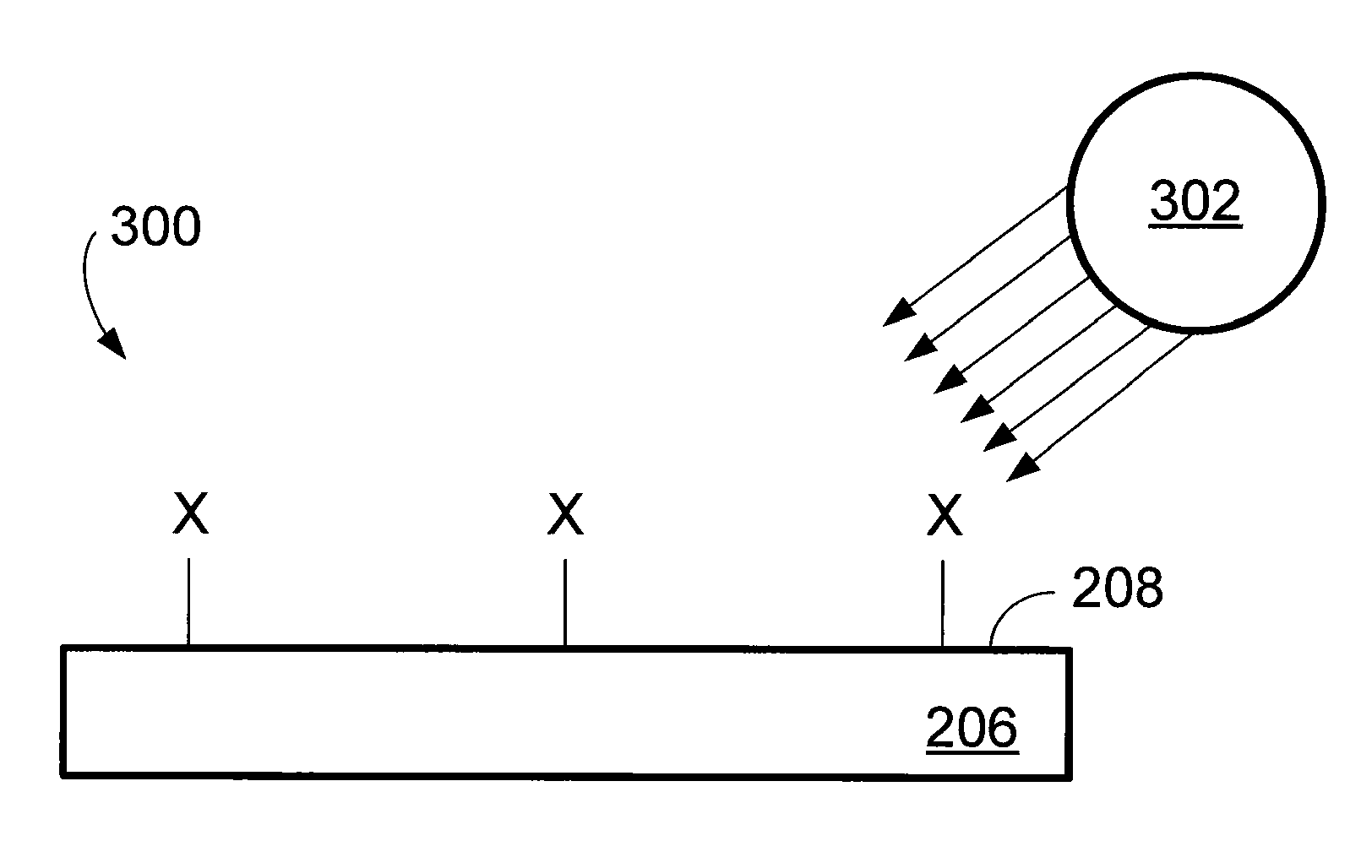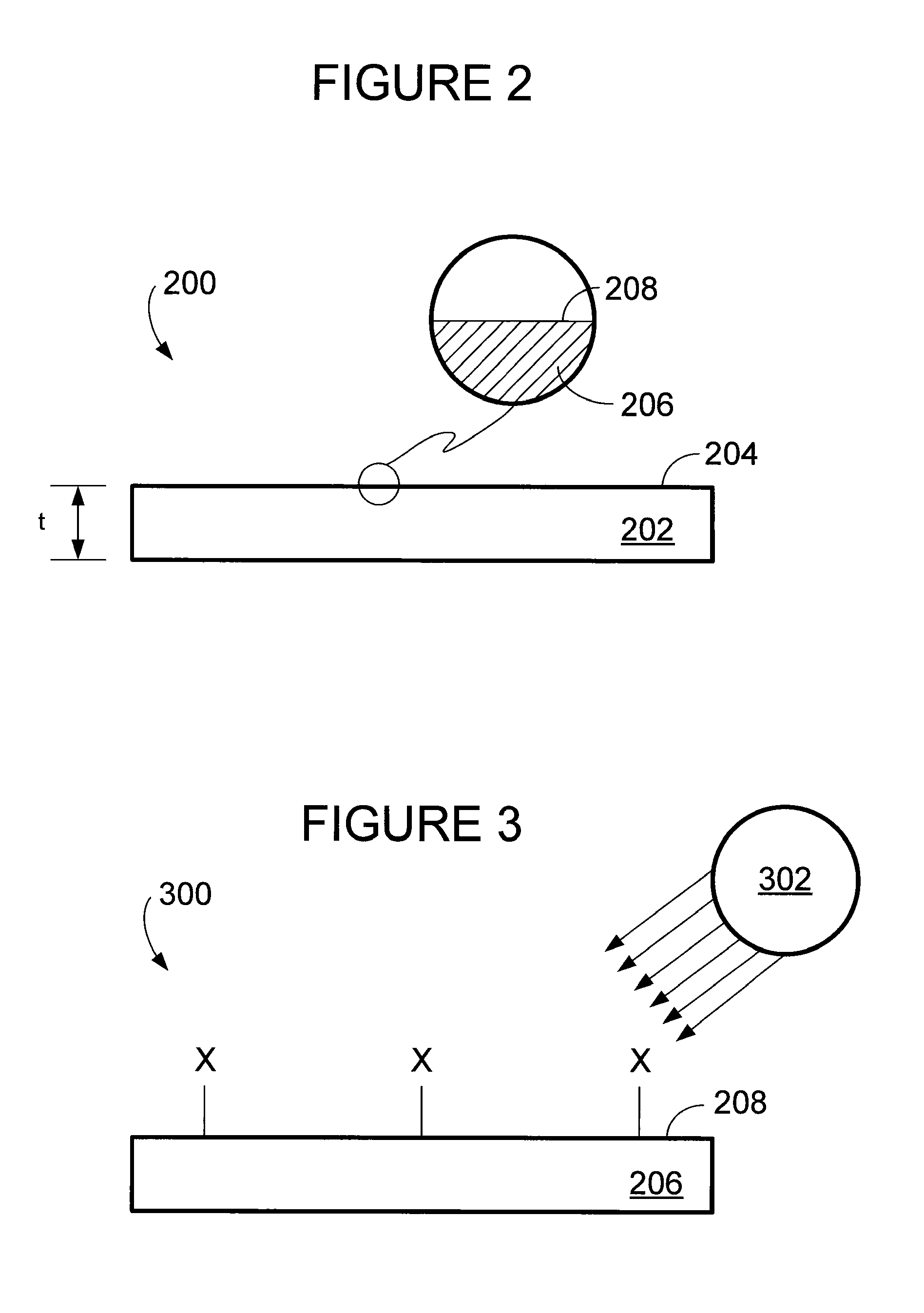System and mehtod for measuring glass transition temperature
a technology of glass transition temperature and system, applied in the direction of surface/boundary effect, thermal analysis of materials, instruments, etc., can solve the problems of uncharacteristically large increase in contact angle, difficult, if not impossible task, and changes in surface chemistry, so as to achieve low contact angle, promote surface wetting, and high initial contact angle
- Summary
- Abstract
- Description
- Claims
- Application Information
AI Technical Summary
Benefits of technology
Problems solved by technology
Method used
Image
Examples
Embodiment Construction
[0024]FIG. 1 shows a glass transition temperature determination method in accordance with the present invention 100. A sample having a surface exposing a hydrophobic polymer is provided 102. The sample's hydrophobic surface is converted to a hydrophilic surface via an atmospheric plasma treatment 104. The treated surface is wetted using a polar wetting material to reveal a contact angle 106. Contact angle variations with sample temperature are then used to determine the glass transition temperature of the polymer 108. As will be described in further detail below, embodiments of this method utilize a single sample and embodiments of this method utilize a plurality of samples. Persons of ordinary skill in the art will recognize the selection of wetting materials, such as water and glycol, is in accordance with expected glass transition temperatures. For example, where a Tg greater than 100 degrees C. is anticipated, a wetting material such as glycol would be selected.
[0025]In various ...
PUM
| Property | Measurement | Unit |
|---|---|---|
| glass transition temperature | aaaaa | aaaaa |
| hydrophobic | aaaaa | aaaaa |
| temperature | aaaaa | aaaaa |
Abstract
Description
Claims
Application Information
 Login to View More
Login to View More - R&D
- Intellectual Property
- Life Sciences
- Materials
- Tech Scout
- Unparalleled Data Quality
- Higher Quality Content
- 60% Fewer Hallucinations
Browse by: Latest US Patents, China's latest patents, Technical Efficacy Thesaurus, Application Domain, Technology Topic, Popular Technical Reports.
© 2025 PatSnap. All rights reserved.Legal|Privacy policy|Modern Slavery Act Transparency Statement|Sitemap|About US| Contact US: help@patsnap.com



